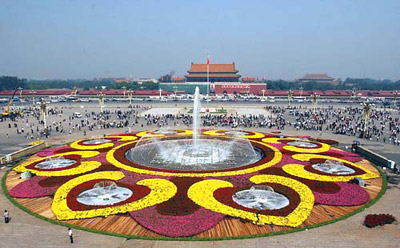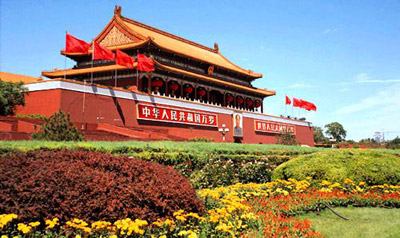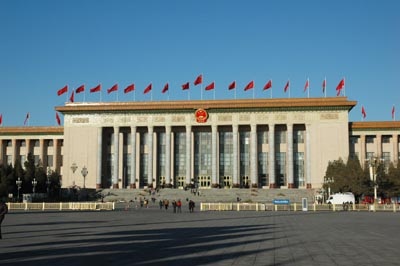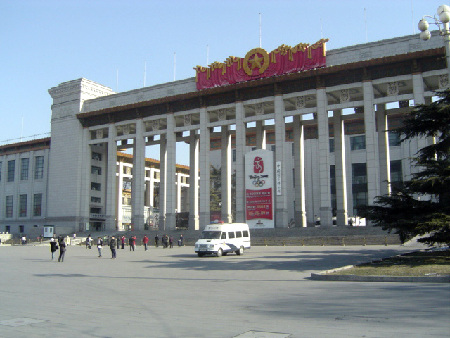|
|
Tiananmen Square
Tian'anmen Square occupies an area of 49 hectares (122 acres), big enough to hold half a million people. It was named after the Tiananmen (literally, Gate of Heavenly Peace) which stands on its north side, separating it from the Forbidden City. As the site of several key events in Chinese history, it has iconic significance as a cultural symbol.
Used as a mass gathering place since its inception, the level surface is broken only by the 38-meter high Monument to the People's Heroes completed in 1958, and the Mausoleum of Mao Zedong completed in 1977. The square lies between two ancient, massive gates: the Tian'anmen to the north and the Zhengyangmen, better known as Qianmen, to the south. Along the west side of the Square is the Great Hall of the People. Along the east side is the National Museum of China (currently under renovation). Chang'an Avenue, which is used for parades, lies between the Tian'anmen and the Square. Trees line its eastern and western borders, but the square itself is open, with neither trees nor benches. Around the Square are several famous buildings: 1 The Great Hall of the People
2 The Museum of Chinese History and the Museum of the Chinese Revolution
These two museums were also built in 1959. the museum of Chinese History houses a permanent exhibition in four parts, covering the entire process of Chinese history spanning from 1.7 million years ago to 1919:
1) The Primitive Society( 1.7 million years ago to the 21st century BC); 2) The Slave Society(21st century BC to 476 BC.); 3) The Feudal Society(475 BC. To 1840 AD.); 4) The Semi-Colonial and Semi- Fedual Society(1840 to 1919.) The Museum of the Chinese Revolution covers the period from 1919 to 1949.
|
| Copyright © China.org.cn. All Rights Reserved 京ICP证 040089号 京公网安备110108006329号 网络传播视听节目许可证号:0105123 京公网安备110108006329号 京网文[2011]0252-085号 |
 0
0 











Go to Forum >>0 Comment(s)